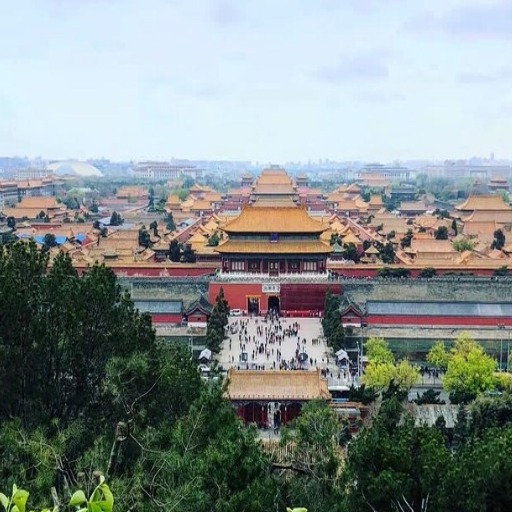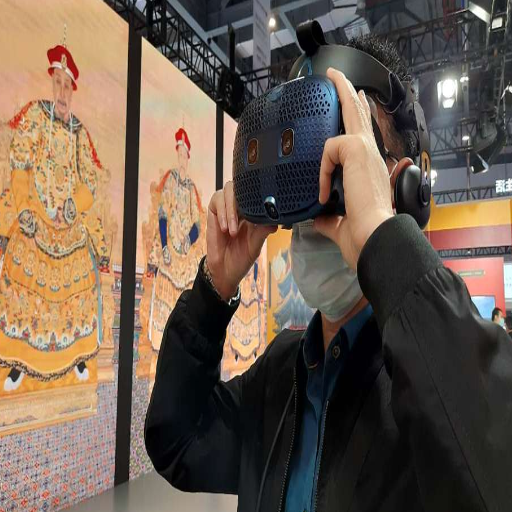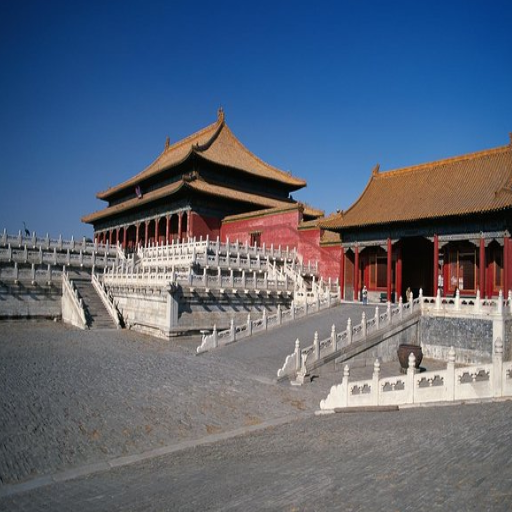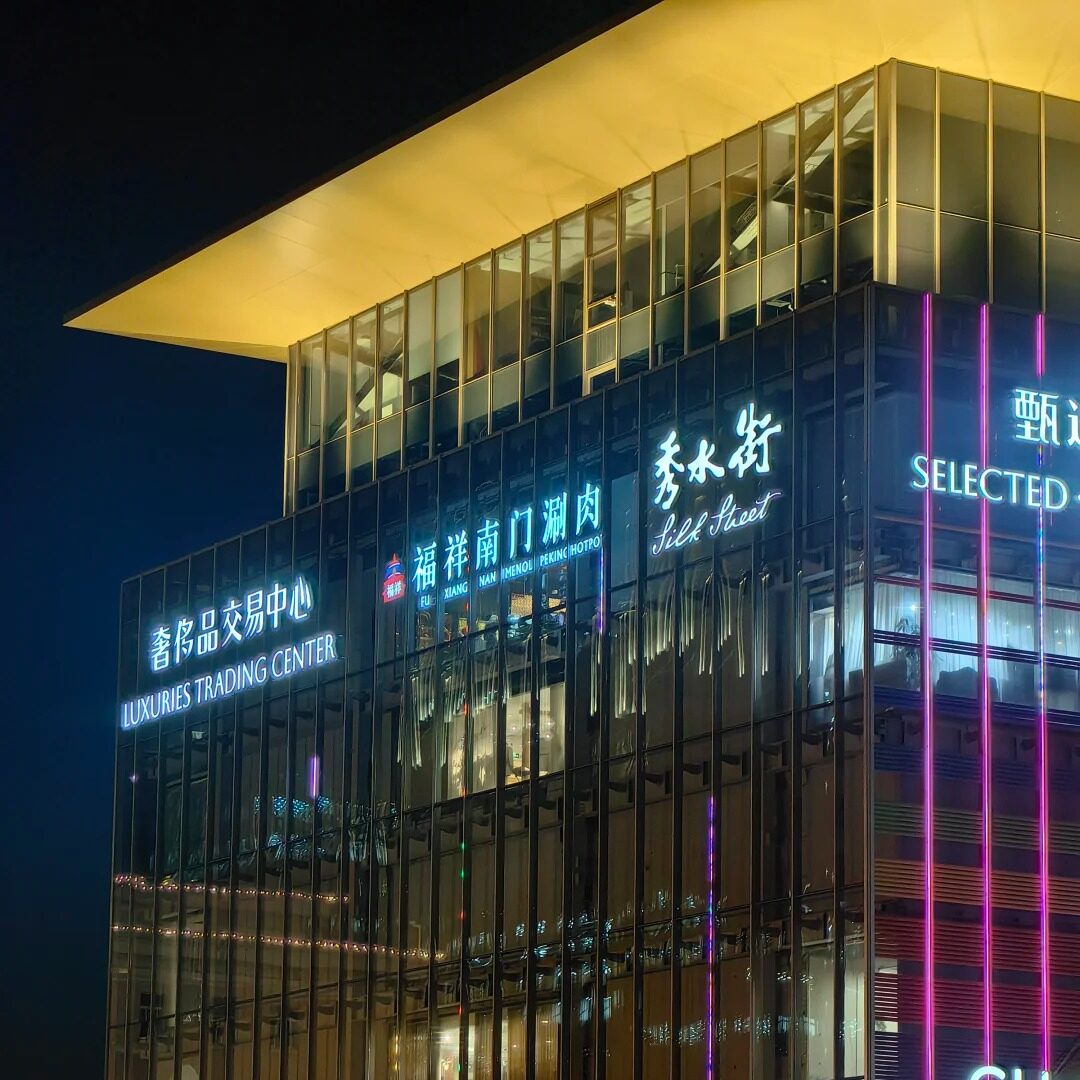The history of China is magnificently symbolized by the Forbidden City, which overshadows the beauty of many other imperial palaces worldwide. You don't have to travel the globe to explore this ancient marvel. The Forbidden City can be accessed from the comfort of your home with immersive virtual technology. On these online tours, you will be able to walk through the gates as well as the exquisitely designed courtyards. You can see all the architectural feats without facing any challenges that would appear in physical visits. This post aims to highlight these tours and awaken imagination using the provided details. Be prepared to uncover the most told and untold stories behind the world's most beautiful landmarks.
What is a Forbidden City Virtual Tour?

How does a virtual tour work?
To “visit” a location, an individual can be digitally transported with the help of the latest technology on a virtual tour as it uses high-resolution still images, 360° pictures, and even interactive features to let people “stroll,” “stop at examine” certain features of the area and receive relevant information without any restrictions. For example, the Forbidden City virtual tour offers panoramic images coupled with vivid narration, which allows one to appreciate the many ornate halls, courtyards, and detailed artifacts. This allows UNESCO World Heritage Sites to be spatially and thematically explored easily and enjoyed deeply by users in an interactive and informative way.
Since virtual tours can be taken on PCs, tablets, and mobile phones, they cover multiple demographics simultaneously and eliminate geographical constraints. Audio guides, images with zooming options, and the contextual Background provide enriched content to aid the experience as mentioned above. For example, Focused observation of grain carvings on palace walls and centuries-old relics can be studied easily. The fusion of technology and thoughtful design of the Forbidden City virtual tour brilliantly transforms the manner in which culture and history are appreciated and experienced by making it relevant and easy to understand for today's audience, adapting it for modern audiences while safeguarding its splendor for future generations.
What can you see during a tour of the palace museum?
The Palace Museum has fascinating exhibits of ancient Chinese art and remarkable architectural masterpieces. While visiting The Forbidden City, which used to be inhabited by the ancient Chinese emperors and the imperial family, one can observe how the City extends over 180 acres, with approximately 1,000 all antique buildings preserved, out of which, The Hall of Supreme Harmony, which the emperors used to officiate ceremonials, along with other private rooms of the emperor's rich and carefully ornamented furnishings and skilled artistry PEEC. As fully described, each structure depicts a relic from the dynasties that ruled China, showcasing mingling artistry and culture, alongside imperial rule, which formed the complex history of the Qing and Ming dynasties.
The different types of treasures stored in the museum, such as the imperial jade carvings, exquisite porcelain wares, and ancient Chinese paintings, display incredible artistry. Some of the most famous pieces include the Twelve Beauties of Yongzheng scrolls and several ornate cloisonné enamel pieces. The seasonal exhibitions also include rare items portraying daily life amongst courtiers and rituals performed in the imperial household. In addition, visitors can discover the sprawling Imperial Garden with ancient trees, colorful pavilions, and numerous streams. This oasis allows for a calm getaway amid the lavishness of the palace grounds.
Modern technologies like interactive screens and VR presentations facilitate the telling of ancient stories, aiding in grasping their importance. Virtual tours enable participants to gain a new understanding of the architectural intricacy and historical relevance of the artifacts. From in-person bookings to online access, the Palace Museum stands out as the centerpiece that showcases Chinese culture, history, and art, inspiring admiration for its indelible mark on humanity’s legacy.
What technology is used in a virtual experience?
Virtual experiences are built with many automated technologies, such as 3-D modeling, Virtual and Augmented Reality, to capture users' emotions. Traditionally called simulation technology, these systems transport users to different realities, digitally enriched worlds or augmented real-world surroundings. Using headsets like Oculus Quest and HTC VIVE, VR systems completely vacate the user's vision, replacing it with the virtual world. On the contrary, AR systems enrich real environments digitally with the help of AR glasses or mobile phones, merging additional data with the physical area in a context-appropriate manner.
Apart from AR and VR, the development of visual components makes considerable use of various 3 Dimensional (3D modeling and rendering techniques. Augmented Reality (AR) programs such as Unity and Unreal Engine aid developers in crafting fully immersive worlds, objects, and characters. Furthermore, Movement capture allows real-time motion to loop animation and is mainly used in the film industry to add a layer of realism. Integrating cutting-edge technology in realism with voice monitoring yawging, virtual environments can be enriched with sound which changes according to the user's position.
The role of cloud computing and artificial intelligence (AI) technologies has become core to virtual experiences. With cloud-based platforms, accessing virtual environments is possible from anywhere, transforming them into global resources that can be accessed remotely. AI improves user experiences with adaptive learning, natural language understanding, and photorealistic graphics. The adaptive algorithms powering AI do even more. These technologies ensure that virtual experiences are as user-friendly as they are groundbreaking. The provided scenarios and interactions become multi-dimensional for the customer and change with them.
Why Visit the Forbidden City in Beijing?

What makes the Forbidden City a top attraction?
The heart of Beijing cradles the Forbidden City, which served as the Political epicenter for China during the Qing and Ming dynasties, which spanned almost three centuries between them. Between 1406 and 1420, it was built and functioned as the center of politics and ceremony for twenty-four emperors under the two aforementioned dynasties. To this day, it is regarded as an architectural masterpiece, containing over nine hundred structures that cover 180 acres of land, all of which adhere to the core principles of Imperial China: Harmony, balance, vibrant colors, and intricate designs.
The magnificence does not end here; it extends to experiencing life during that time through adorned hall relics coupled with imperial relics. Walking through the gates of the Forbidden City grants one the feeling of being immersed in a time machine, opening the doors to centuries of unhindered access to China’s art and culture. But that is not all, it also boasts the status of a UNESCO World Heritage site, which further enhances its magnificence, knowing that millions flock each year just to experience all it has to offer.
What is the history of the Forbidden City?
The Forbidden City, translated to Chinese as “Imperial Palace City,” is an astonishing architectural feat. Zheng He was ordered to build it in 1406, which took around 14 years, and to this day, it remains one of the biggest wonders in modern history. It served as the imperial defences for Beijing, guarded by a sectional complex that housed servants, general soldiers, and other military personnel. The intricate care that is provided to the palace wall embodies the different philosophies of the Confucian tradition alongside Buddhist ideologies, which Chinese philosophers follow, endorsing perfection in the balance of nature and order.
Moving away from the palace side of things, the moat surrounding the perimeter provided partial access towards the city's outer regions, but also enhanced the buildings within, which was a sloshing and connected body of water, adding to the sophisticated ancient Chinese architectural style of the empire. Each section and area featured masterful symmetry, thoroughly portraying power and dominance. Ancient tiling and rudimentary materials sculpted these emblems of heirlooms, wood, and marble. Overall, the number of emblems and designs sprinkled throughout each of the 8,000 different sections residing in a total area close to 180 square units. The construction left scars throughout the conflict, giving it unique limbs akin to a mottled appearance.
Through fire, wars, and political conflicts, the Forbidden City has faced many reconstructions; throughout it all, it remained a resolute epicenter of power. After the reign of the last emperor, Puyi, in 1912, parts of the palace complex opened in 1925 as a museum, preserving parts of its invaluable treasures and opening it to the public. In contemporary times, the Forbidden City is regarded as one of the best-preserved examples of ancient Chinese Architecture, serving as a legacy of imperial culture, art, and governance unmatched by any other historical site.
What are the key features of the outer court?
The Outer Court of the Forbidden City was the main area for imperial rituals and governance activities during the Ming and Qing dynasties. It is organized around three major halls, the Hall of Supreme Harmony, the Hall of Central Harmony, and the Hall of Preserving Harmony, each serving distinct functions that showcase the empire's splendor. As the most prominent building in the complex, the Hall of Supreme Harmony serves state functions like coronation of the emperors and weddings, in addition to all significant state rituals. The Hall of Central Harmony served as a waiting room where the emperor could rest and refine his performance, rehearse, and rest before engagement in formal functions. The Hall of Preserving Harmony served as a venue for the major banquets and the last stage of the imperial examinations, which is the final stage of the competition among Chinese scholars.
Expansive stone terraces and enormous open courtyards highlighted the splendor of the Outer Court. The symbolically intricate carvings of dragons and phoenixes embody power, strength, and prosperity. Within the Outer Court, the precise arrangement of buildings according to ancient Chinese cosmogony supported the emperor’s claimed divinity and bolstered his purported links to heaven. Additionally, the boundless extent and symmetry of the Outer Court embody, in a single snapshot, the unparalleled ingenuity of Chinese architecture alongside the profound wealth of their history.
How to Explore the Forbidden City with VR Technology?

What is the best VR headset for a virtual tour?
Several essential factors include resolution, comfort, and ease of use when choosing the best VR headset for a virtual tour of the Forbidden City. A notable option is the Meta Quest 3, which has mixed-reality capabilities and is more mobile than its predecessors. Like most modern headsets, the Meta Quest 3 has high-resolution lenses, guaranteeing sharpened spatial immersion. The intriguing architecture will not be unimaginably vivid. However, every detail will be vividly displayed.. The intuitive controls add to the seamless experience, making the quest portable yet valuable for advanced learners.
Another exceptional contender is the HTC Vive Pro 2, widely recognized for its stunning 5K resolution and precise tracking. This headset is tailored for technology enthusiasts and provides precise imagery alongside a life-like experience, which makes admiring the architectural value of the Forbidden City easy and capturing its richly layered historical layout delightful. Although the headset requires a powerful PC to be attached, its clarity and depth of immersion make it an investment that enables serious PC VR exploration.
The Pico 4 has competitive pricing and excellent features if you are looking for an economical option. It has a 4K resolution while maintaining a lightweight and comfortable design, making it easier to use in a variety of situations. It also features simple setup procedures, which means you can easily visit places like the Forbidden City. These headsets showcase advanced technology and user-centered design, making them prime examples of how VR is transforming the world of heritage tourism and enabling interactive experiences with ancient marvels.
How do you download a virtual tour of the palace?
Before downloading a virtual tour for the palace, it is essential to recognize which app or platform contains quality virtual tours of historic places. Dedicated apps like the Google Arts and Culture grant access to many virtual centers or even museums' official websites; hence, care is needed while treading on your needs and checking for importance. With reputation reviews and credibility in mind, download the app or program that best fits your existing device, be it a smartphone, VR headset, or tablet.
After installing the program, look up the specific tour or even the Forbidden City. Inclusivity of genres and search options within the program aids in locating the requested tour effortlessly, meaning that ease of entry is not the issue. More often than not, access to these tours is free or offered as part of the premium subscription package. Due to the ease of download, ensure to enable offline mode as this permits the user access to unrestricted WiFi. Ensure your device has ample storage when downloading, as high-definition memory tours are available.
Once the download is complete, open the application to start the virtual tour. For VR users, connect and calibrate your headset for full immersion. An interface or guide will help you traverse the palace's different rooms, corridors, and courtyards. The tours are engaging and educational because they often include 360 views, pop-up information, and cultural comments. This smooth process allows you to experience the breathtaking historic splendor of the palace while turning your device into a rich window of history and culture.
What interactive features enhance the virtual experience?
The interactivity of a virtual tour makes it more than just a digital viewing; it is now a multifaceted immersive experience. One major component is the addition of 360-degree views, which permits users to inhabit an area from every angle. This feature lets one virtually experience impressive architecture, intricate works of art, or even breathtaking nature views in real time. Moreover, virtual tours frequently come with zoom-in features allowing users to examine minute details such as carvings or frescoes up close that go unnoticed. The level of interactivity provided allows users better to understand the space’s cultural and historical value.
Curated popups and interactive audio guides serve as another supplemental enhancement. While moving through the environment, users are provided with short snippets of information that display historical context, fun facts, or relevant tales, which deepen the experience and compassion for art. With the help of audio narration, which some users find more appealing, guided explanations complete with rich storytelling are available, thus enhancing the value even more. Users are also allowed to participate as viewers and actively through engaging features like quizzes or scavenger hunt.
Last of all, advanced technology like augmented reality (AR) and virtual reality (VR) is increasingly used to amplify the virtual experience. With AR, the capability to project graphics onto the physical world enhances real life, visually intermingling the two worlds. VR, otherwise, transports the user to the virtual space via VR goggles, which is a more enticing experience. All of these enable an individual to engage with the worlds of history, art, and culture in a profoundly versatile, available, and incredibly interactive manner without the need to step outside one's house.
What to Expect from Your Forbidden City Virtual Tour?

What exhibits will you see in the Palace Museum?
The Palace Museum contains a remarkable collection of Chinese cultural relics in the center of the Forbidden City, epitomizing the splendor of imperial China. With over 1.8 million items in the collection, visitors can view paintings, ceramics, jade, bronze works, and even imperial furniture. One of the museum’s most distinguished exhibitions is the “Hall of Clocks,” boasting highly coveted clock masterpieces from China and the West, loved by the imperial court. Equally important is the “Gallery of Treasures” in the Palace of Tranquil Longevity, showcasing masterfully crafted jewels and gold-inlaid artifacts alongside exquisite ancient goldwork.
The scroll paintings and calligraphy collection also serves as a window into China’s evolving artistry, captivating those interested in ancient Chinese art. On the other hand, select porcelain pieces from the Ming and Qing dynasties serve as testaments to the zenith of ceramic artistry. Treasures such as these are housed in their original castle-like rooms, providing contextual depth for visitors. As a whole, these timeless artifacts offer unrivaled understanding of Chinese history, culture, and artistry.
How detailed is the virtual tour?
Focused on enhancing user engagement, the virtual tour is designed to bring historical and art museum collections to life with unrivaled precision. Through high-resolution imaging, each artifact can be accessed in detail with zoom capabilities to view textures, patterns, brushstrokes, and intricate elements that would otherwise go unnoticed even in physical museums. Moreover, the tour provides curated 360-degree views of entire artifacts so that the users can virtually stroll through galleries, halls, and courtyards, simulating physical presence. This design strategy ensures all architectural and contextual connections are made with the artifacts.
Aside from the visual details, the virtual tour has an enriching layer of educational content. Every exhibit has detailed descriptions and stories that explain their importance, cultural values, and the work that went into making them. Users are also offered clickable hotspots and guided audio commentaries, rich in exploration, insights, and anecdotes that improve interactivity. The platform may also include timelines and maps to situate the artifacts within a broader historical and geographical framework. The virtual tour mirrors the beauty of history with intricate creations that are not dull but further stimulate learners and enthusiasts around the globe.
What highlights are included in the virtual reality experience?
The virtual reality experience allows users to explore history's most iconic artifacts and locations. Users can stroll through ancient ruins, vividly reconstructed markets, and centuries-old bustling palaces in 3D. Users can appreciate meticulous details, sculptures, and architectural designs made in each setting as participants get foremost regard for the artefacts. Furthermore, users can interact with a few elements that allow them to rotate objects, zoom into inscriptions, or reveal layers that unveil multiple perspectives to the tales of yesteryears.
Additional features, such as expert historians and cultural scholars, provide voiceovers integrated into the tour, enhancing the virtual reality experience and deepening engagement and understanding with the materials. Users are also given augmented historical maps and timelines, which help them visualize the specific depicted eras geographically and chronologically. However, some packages also offer live expert users who help clarify details or expand their knowledge. Blending cutting-edge technology with educational content transforms historical exploration into a deeply informative adventure.
Why Choose a Virtual Experience Over an In-Person Visit?

What are the advantages of a virtual tour?
Virtual tours offer some of the best flexibility for exploration because they are convenient. Instead of spending resources and time traveling for guided walks to significant historical places, I can now virtually walk through them. This also applies to individuals with physical disabilities. For people who cannot walk, virtual tours allow them to view and experience places that would be impossible otherwise.
The educational aspects of virtual tours offer convenience beyond imagination. While tours are displayed systematically with pictures, videos, and voice-overs explaining complex ideas, I can easily understand the intricate details concerning a place’s history, culture, and importance. Unlike in face-to-face meetings, where one can miss many things, the virtual format allows the option to stop and replay. Additionally, I admire platforms that utilize expert commentaries, as they add value to the experience.
Lastly, virtual tours offset the environmental impact related to physical tourism. Knowing that my travel doesn’t incur the hefty carbon price of flights and other tourist-related travel makes me feel good about virtually exploring the world. Seeing my technology allows virtual access to the globe while keeping to eco-friendly measures is quite inspiring.
How does a virtual experience compare to an official visit?
In my view, both a virtual experience and an in-person visit have upsides and downsides. However, virtual endeavors offer the most notable advantage of convenience. Spending time unlocking new cultures, visiting new museums, or sightseeing faraway natural wonders is as easy as sitting on a couch. Budgeting time or money is unnecessary for traveling, loading logistics, or dealing with travel restrictions. This is important for individuals with financial constraints or physical barriers, allowing them to visit specific destinations. Virtual tours done through image hotels, 360-degree videos, and interactive elements will enable me to engage almost as if I am there in person.
Nonetheless, nothing comes close to the depth gained during a physical visit. Sights, sounds, and textures all come to life when I am physically present, engaging all of my senses like the bustling streets, local cuisines, and putting my hands on the place with rich local history. Those sensory aspects help create multi-dimensional and unforgettable memories, which are very hard to replicate in a virtual setting. Moreover, the ability to encounter and engage with random local things adds a layer of discovering the unknown, sprinkled with a wealth of self-enrichment that virtual experiences will forever fail to imitate.
As mentioned previously, a virtual experience and an official visit both have pros and cons, which depend on one’s personal goals and circumstances. A virtual tour works best for curiosity-driven purposes, education, and green travel. In contrast, an official visit caters to my desire to engage meaningfully with a place's complete authenticity. I perceive both these approaches as complementary rather than mutually exclusive, each in its way enhancing my understanding of the world.
What insights can you gain from a China guide on a virtual tour?
A virtual tour of China can help me learn about China’s culture, history, its myriad sites, traditions, and other things of importance. With good narration, I can learn about some of the most famous sites in China, such as the Great Wall, the Forbidden City, and the Terracotta Army. I can also understand some of the covered history behind the landmarks and how they shaped China. He/She can narrate ideologies, dynasties, and events which would enhance my understanding of how history and culture blend.
A virtual tour not only concentrates on History but also often showcases the difference China has, like the calm beauty of Guilin”s Karst Landscapes and the Urban Bustle of Shanghai. The guide can describe these places in detail or even show them in real time, which would help me understand the difference between rural and metropolitan life in China. Almost certainly gain also traditional arts, food, and customs, which are essential while trying to understand the nation's identity.
What enhances my experience the most is the ability to inquire or participate in discussions with the guide because it lets me explore areas of my interest. Although I am not present, their knowledge makes my learning genuine and connects my virtual watching with the real world and cultural immersion. In brief, a China guide on a virtual tour enhances my grasp of the nation’s past and present and provides myriad ways to discover the nation’s endless wonders.
Frequently Asked Questions (FAQs)
Q: What does the Forbidden City Virtual Tour Experience include?
A: The Forbidden City Virtual Tour Experience is a website that allows people to visit the intricacies and beauty of history in the Forbidden City, which served as the Imperial Palace of the Ming and Qing Dynasties. Users can interact with pieces of history through a 360-degree view of the Forbidden City, allowing them to zoom deep into China’s rich history and culture from any device.
Q: How can a visitor access the Forbidden City Virtual Tour?
A: Users can access the Forbidden City Virtual Tour through the official website or the app. The tour's design is intuitive, so it can easily be used on different types of devices without any hassle.
Q: What are some key features of the Forbidden City Virtual Tour?
A: Other essential elements include the interactive narrative and exposé of the granted architecture and artistry prized collections, which enable visitation to significant places like the Hall of Supreme Harmony, the Meridian Gate, and the Imperial Garden. Visitors also receive instructional information concerning the sovereigns and the Ming and Qing Dynasties.
Q: Can I explore Chinese art and history on a virtual tour guided by an expert?
A: Absolutely. The Forbidden City Virtual Tour has many exhibitions showcasing Chinese art, imperial relics, and the detailed history of the Ming and Qing Dynasties. The exhibitions feature remarkable works of art and sculptures that help visitors understand the culture and history.
Q: Can visitors access any guided tour during the virtual visit?
A: While there are no physical guides, the virtual tour provides thorough explanations for each area. Visitors can also interact with different parts of the site, allowing them to navigate through halls, courtyards, and pavilions without missing out on anything vital.
Q: What additional features does the virtual tour include?
A: The virtual tour contains interactive features like clickable hotspots and pop-up stories on different parts of the site. These features enhance visitors' learning experience.
Q: Can you name some features of the architecture that you'd expect to see in the virtual guided tour?
A: Visitors may come across several architectural features revolving around the Gate of Supreme Harmony, marble bridges, the Inner Golden Water, some pavilions, and many others. All of these are among the best parts of the imperial architecture of the Forbidden City.
Q: In what ways does the virtual tour integrate the history of the Ming and Qing Dynasties?
A: The tour integrates stories and displays that mark notable milestones, such as the enthronement of emperors and the Forbidden City’s role during the Ming and Qing Dynasties. Visuals and interactivity further enhance this narration to augment understanding.
Q: Is there a forum for users interested in the Forbidden City Virtual Tour?
A: Yes, there is a forum where users can post to share experiences, discuss history, and suggest other related topics related to the architecture and culture of the Forbidden City, which adds to the educational experience of the virtual tour.
Q: Does the Forbidden City Virtual Tour offer any inclusivity features?
A: The virtual tour is inclusively designed with features such as optimal control over font size, audio text guides, and simplified pathways to different sections, which guarantee the enjoyment of all visitors, because of ease of access.


